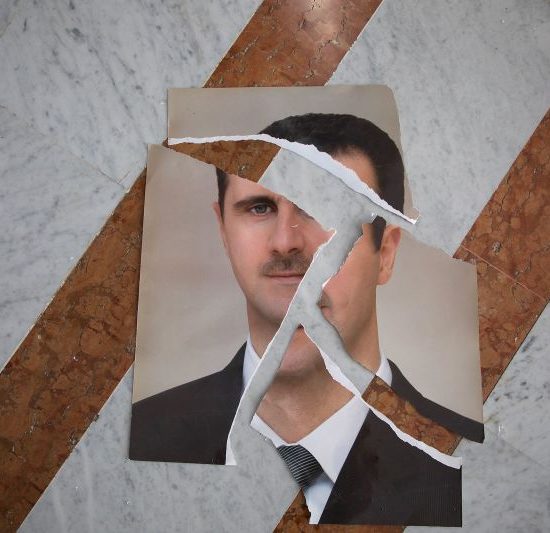Ahmed Al Sharaa, an Islamist militant in his late 20s, moved back to Syria from Iraq in 2011 with six men and a monthly stipend of $50,000 from Abu Bakr al-Baghdadi, who would go on to become the world’s most wanted terrorist. His mission was to establish Al Qaeda’s Syrian affiliate, Jabhat Al Nusra.
Sharaa is now commanding thousands of men in an armed rebellion threatening to topple the regime of Syrian President Bashar al-Assad. He’s better known by his nom de guerre Abu Mohammed al-Jolani.
Born in the Saudi capital Riyadh to Syrian parents from the Israeli-occupied Golan Heights and raised in Damascus, Jolani said in an interview with PBS in 2021 that he was galvanized by the Second Palestinian Intifada (uprising) against Israel in the early 2000s and went on to become a jihadist in Iraq after the 2003 US invasion. His deep knowledge of Syria caught the attention of his commanders in Iraq as they were looking to expand their foothold in Syria during the country’s uprising.
Sharaa is now commanding thousands of men in an armed rebellion threatening to topple the regime of Syrian President Bashar al-Assad. He’s better known by his nom de guerre Abu Mohammed al-Jolani.
Over the years, his influence grew despite his identity being kept under wraps. During television interviews, he never faced the camera directly and always covered his face in public appearances.
His public debut was in a 2016 video when he announced a split from Al Qaeda to create what he said was a Syria-focused anti-regime front with other local factions, called Jabhat Fateh al-Sham (the Front for the Conquest of the Levant), which later changed to Hayat Tahrir Al Sham (HTS), or the Organization for the Liberation of the Levant.
“This new formation has no relation to any external party,” he said at the time, distancing it from his radical Islamist past.
The split was strategic. The goal was to fend off attacks from world powers like the United States and Russia, both of which had intervened in the Syrian civil war to target Islamist groups like Al Qaeda and ISIS. It was also the start of Jolani’s gradual transformation from the classic anti-West jihadist, to a more palatable revolutionary. He told PBS in 2021 that he had no desire to wage war against Western nations.
Western-style blazer
In the years that followed, Jolani replaced his jihadist camo attire for a Western-style blazer and shirt, established a semi-technocratic government in Idlib, which his group held control over, and promoted himself as a viable partner in regional and Western efforts to curb Iran’s influence in the Middle East. He conducted operations against ISIS including the 2023 high-profile killing of ISIS leader Abu Hussein Al-Husseini al-Qurashi.
This week, his group publicly published his real name for the first time in a statement announcing the capture of Hama.
“He’s shredded all transnational ties and objectives and rooted out ISIS and Al Qaeda operatives in areas he controls,” said Dareen Khalifa, a senior advisor at the Brussels-based International Crisis Group think tank.
His media appearance of late have also attempted to promote leadership qualities he gained over the years governing 4 million people in Idlib province, northwest Syria.
In Idlib he embarked on a campaign to eliminate ISIS as well as potential threats to his influence, arresting former commanders and eliminating rivals.
Despite attempts to distance his group from extremist organizations, the United States still designated his new group a terror organization and targeted members of HTS who once fought for Al Qaeda, proving his rebranding attempts a failure.
But the landscape in Syria and the Middle East has changed since. A collapse of the Syrian regime could finally break Iran’s so-called Axis of Resistance – a network of allied regional states and militias. Jolani may be positioning himself to play a key role in that outcome, hoping it will earn him favor both in the region and with the West.





